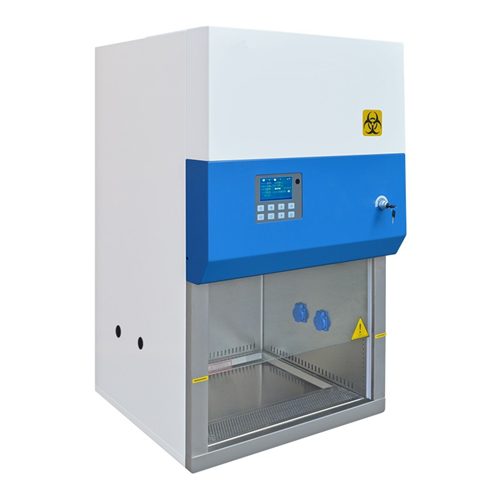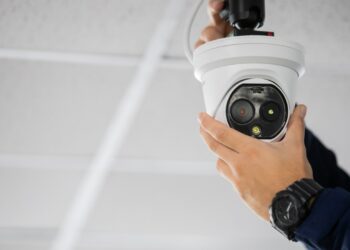A Benchtop Biosafety cabinet (BSC) is a device that isolates those working with hazardous materials from the surrounding environment. The cabinet may be used in conjunction with an exhaust isolation installation which provides local exhaust ventilation for the BSC. This ventilation may prevent the spread of potentially infectious materials (PIMs) into the surrounding work environment.
These cabinets work great to offer sanitized working space, additional safety for the lab workers, and keeping hazardous substances contained within the chambers. Different cabinets work on different principles, but most commonly, you will see cabinets with laminar airflow. This unidirectional flow helps to keep the product or sample clean against any possible threats.
How do Benchtop Biosafety Cabinets work?
The work performed in a Benchtop Biosafety Cabinetis supported by the flushing of air and any biohazards through outside, filtered exhaust. Outside exhaust ventilation takes place provided there is an external connection for the BSC. The exterior exhaust connection must be sized to convey the air contained within, which can be either single side or double-sided.
Streamline, and unidirectional airflow ensures that any possible contaminants which may pass through the manifold system would not reach and contaminate those in the working area. The exhaust airflow will produce negative pressure inside the cabinet chamber, and ambient air or pressure will enter through the other side.
Exterior airflow must have a sufficient pressure rating to protect against potential microbial threats to those working within a BSC. In addition, this labeled exhaust connection should be located in a separate room from the cabinet and away from any potential danger.
Different Types/Class Of Benchtop Biosafety Cabinet
Based on the level of safety and active functioning against threats and hazards, benchtop biosafety cabinets are classified under three levels, namely I, II, and III. Class II BSCs have only one exhaust port, which is tightly sealed and connected to a fan. Class II cabinets are intended for microorganisms that are considered non-pathogenic. Such cabinets are more suitable for flammable gasses, solid materials, and some chemicals.
The Class II cabinets usually contain several options: a hands-free entry/exit door, adjustable internal light source, and internal shelves. The second classification is Class III which indicates more hazardous work with more pathogens or cultures used for experiments such as animal testing. Finally, the third classification is Class I, which indicates severe biological hazards and works with highly infectious materials.
Proper Installation Of A Benchtop Biosafety Cabinet
An exhaust connection must be installed into the BSC for outside air to enter. This connection should be installed so that the airflow is accessible and removable without depending on the work being done.
The BSC should also be placed within an area where it is not too close to any potential biological threats or sources of potential contamination. The exhaust connection can be located within a separate room from the BSC if necessary.
Related: Guide to Effective Construction Equipment Management
This will eliminate potential infection risk by operating a separate ventilation system for the air exiting the BSC. It is generally recommended to use double-sided connections for Class III and Class I isolation cabinets, but single-sided connections are adequate for more standard classes II and III.
Common Applications Of Benchtop Biosafety cabinets
BSCs are classified within different classes, which indicate the degree of biological safety from PIMs. The main benefit of working in a BSC is the amount of time you can stay within the lab while keeping your critical biohazards separated from you and others. This is critical when isolating contaminated materials or infectious agents that may cause grave harm to those who come into contact with them.
- These cabinets provide the best safety while working with infectious substances, potential biohazards, or hazardous materials.
- This device can offer a protective barrier to those working within the lab while keeping these materials contained and away from the general work environment and possible threats.
- BSC also helps keep your workspace clean and ready for your next experiment without worrying about infection risk.
- Perfect for college labs, food processing plants, research facilities, or any type of laboratory that may have hazardous materials in the work environment.
- These devices will help keep any contamination threat from spreading within your working environment and protect those that come into contact with these materials.
Using an advanced benchtop biosafety cabinet is highly recommended for those doing work that involves handling infectious agents or potentially dangerous biohazards. These benchtop BSCs are small enough to be used in various settings and can keep your workspace clean and ready for the next experiment.












Discussion about this post